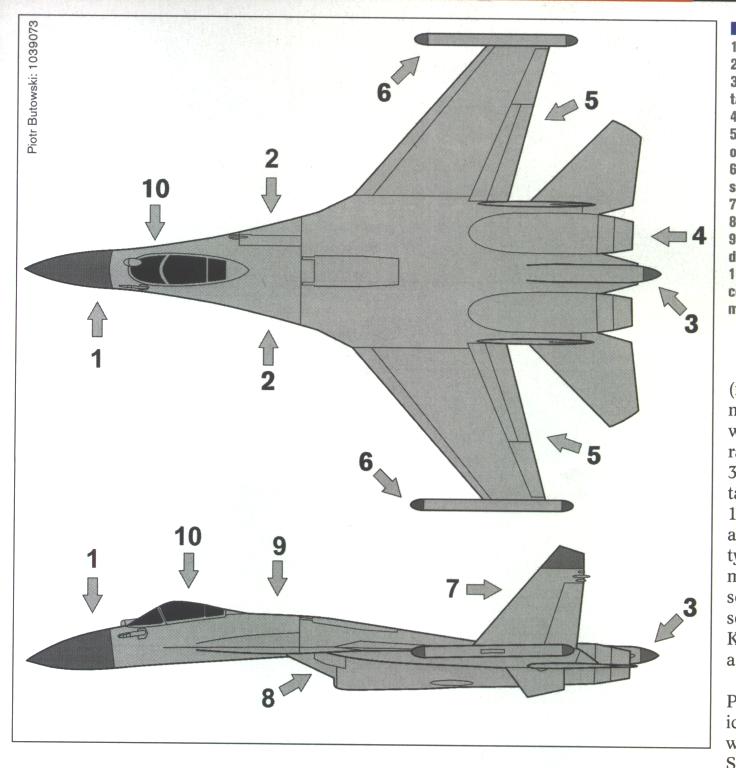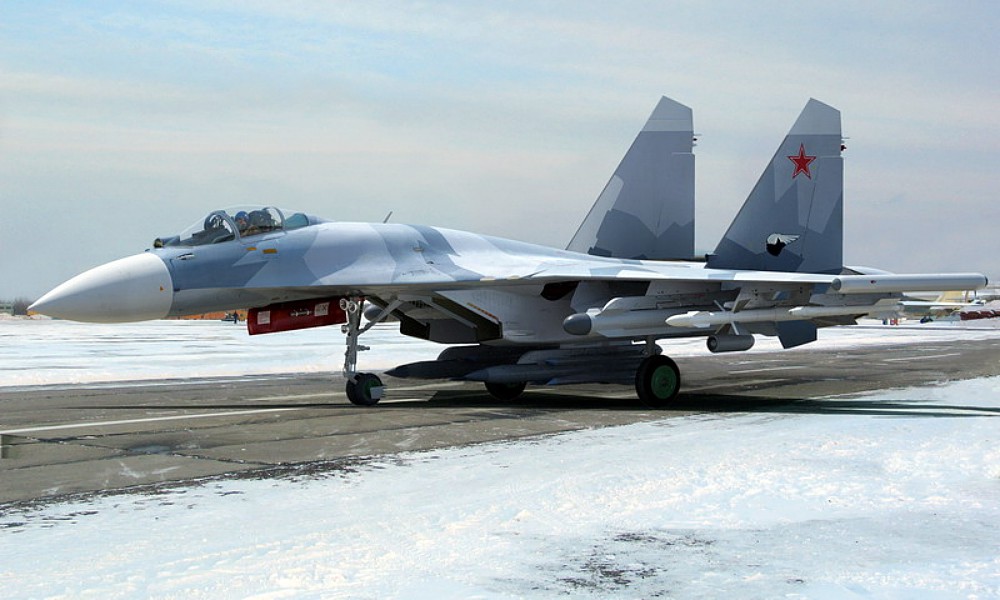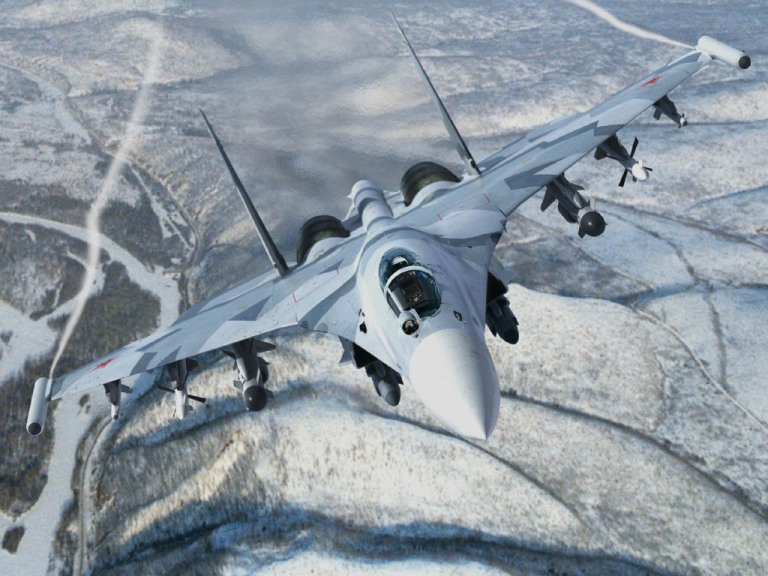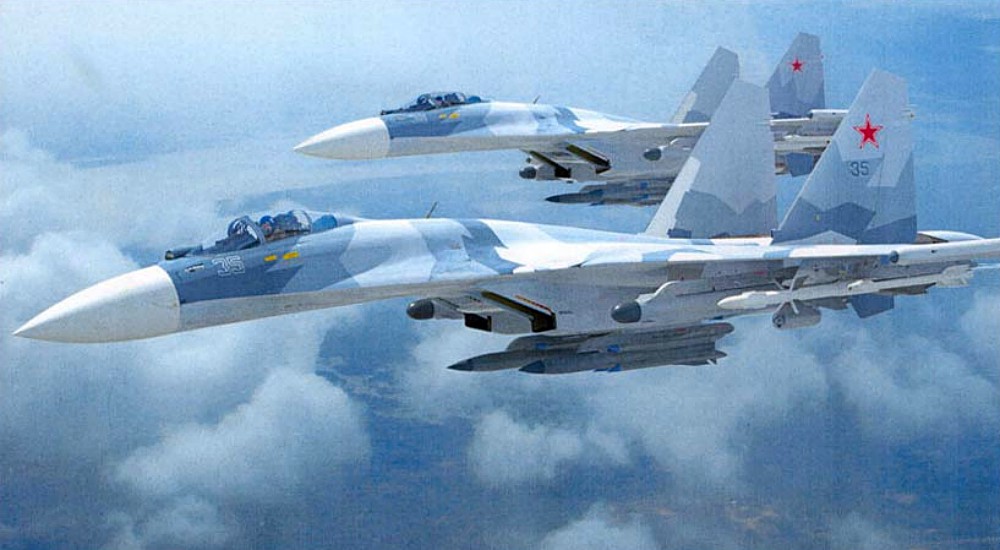새로운 Su-35 계열기체의 등장 - Su-35BM
KCX | 2007-01-23 09:35:10
조회 8322 | 추천 2 | 다운로드 5
최근 새로운 Su-35 계열기체가 등장하고 있습니다.
Su-35BM (BM : Big Modernization) 이라는 명칭의 기종으로, 현재 러시아 공군의 Su-27 전투기 현대화사업인 Su-27SM의 경험을 토대로 기존의 Su-35를 한층 더 발전시킨 기체라고 합니다.
기존 Su-35 전투기에 비해 발전되거나 달라지는 부분은 일단 크게 10가지인데,(1번사진 참조)
1. N035 Irbis Radar 장착
2. Canard 폐지
3. 신형 후방근접방어레이더시스탬 장착
4. AL-41F1A 터보펜 엔진 장착
5. Extended high-lift devices with large flaperon occuping the full trailing edge
6. L175M Khibiny-M electronic-warfare self-defence system
7. Reduced-area empennage
8. 확장된 Air Intakes
9. New and lighter systems, including quadruple digital fly-by-wire flight-control system
10. New man-machine interface with fully-glass cockpit with two large LCD screens and helmet mounted display
등입니다.
MAKS 2007 에어쇼에 공식적으로 그 모습을 선보일 것이라고 하니 지켜보는것도 괜찮을 듯 합니다.
In December 2003, after the Su-27SM modernization program had been deemed a success, Russia announced that it would proceed with the so-called "big modernization" program. The modernized aircraft is called the Su-35BM (also T-10BM) by Sukhoi, but it is not yet known what name will be adopted by the Russian Air Force. The Su-35BM program is to be a deep modernization of existing airframes, not newly produced aircraft.
The main new feature of the aircraft is to be a new radar. It has not yet been decided whether it will be the Phazotron-NIIR N031 Sokol or the Tikhomirov NIIP Irbis. The first is actually the well-known Zhuk radar with a passively scanned phased array, while the Irbis is a version of the N011M Bars-M, also with a passively scanned phased array. In 2003 a new phased-array antenna was tested for Indian Su-30MKI aircraft, but it achieved only +/-45 degrees of horizontal field of view, instead of the planned +/-70 degrees. The remaining angle of 25 degrees was achieved mechanically via a hydraulic servo, which was an unsatisfactory solution. The Irbis is to differ from the Bars-M by having quick servos that are tightly synchronized with the radar electronics to achieve the 70 degrees of scan on either side of the fighter's axis. Sources says that NIIP's solution is preferred by the Russian Air Force, since NIIP radar sets were all proven in service. The radar is to have similar capabilities to the N011M Bars-M. The detection range of a fighter airplane (170 km) and a destroyer-sized naval target (300 km) more or less matches the N011M's performance.
The Su-35BM is also to receive a small radar in a tail "stinger" to monitor the rear hemisphere. It is to be a NIIR N012 Kopyo-DL with a passively scanned phased-array antenna with a range of about 50-70 km. The unique arrangement indicates that Russia does not plan to rely as heavily on data exchange networks to maintain situational awareness, although the Aist data-exchange system for the Air Force is under development.
The weapons set for the Su-35BM is to be the same as the Su-27SM. Among the new weapons in development is a long-range air-to-air missile with required range of 300 km. Since the range is beyond radar range, external information is required to prepare the missile for launch. Two or four such missiles are to be carried. The missile is to be developed from either the Novator KS-172 technology demonstrator or the Vympel R-37M missile, also proposed for the MiG-31. Sukhoi prefers the first solution, and one can say that it is part of Sukhoi's long-standing strategy to prompt the Air Force to "kill" the MiG-31s and replace them with the Su-27 family of aircraft.
The Su-35BM is also to receive a totally new self-protection system. It was developed by KNIRTI (Zhukov near Kaluga, Russia) and is designated the L-175M Khibiny-M. It has an integrated electronic-support-measures system of high accuracy, a separate display in the cockpit, a digital processor, and an integrated active radio-frequency jammer with pods on the wingtips. Probably in the future, the aircraft will also receive a missile-approach-warning system and a towed decoy (for example, the Lobushka). The aircraft will have RAM coatings and some internal changes to increase stealth features, such as a new windshield and canopy of slightly different shape covered with radar-absorbent material.
The modernized Su-27SM, together with the modernized Su-25SM and Su-24M, will form the core of the Russian Air Force for the next two decades, and this could lead to the complete withdrawal of MiG-29 aircraft, which are not going to be modernized. While the MiG-29SMT represents the ultimate modernization variant for this undervalued aircraft, without dividing the upgrade into phases, it could not be presently afforded by Russia. The Sukhoi approach, with "small" and "big" modernizations, was much more realistic and ultimately triumphant.
Su-35BM (BM : Big Modernization) 이라는 명칭의 기종으로, 현재 러시아 공군의 Su-27 전투기 현대화사업인 Su-27SM의 경험을 토대로 기존의 Su-35를 한층 더 발전시킨 기체라고 합니다.
기존 Su-35 전투기에 비해 발전되거나 달라지는 부분은 일단 크게 10가지인데,(1번사진 참조)
1. N035 Irbis Radar 장착
2. Canard 폐지
3. 신형 후방근접방어레이더시스탬 장착
4. AL-41F1A 터보펜 엔진 장착
5. Extended high-lift devices with large flaperon occuping the full trailing edge
6. L175M Khibiny-M electronic-warfare self-defence system
7. Reduced-area empennage
8. 확장된 Air Intakes
9. New and lighter systems, including quadruple digital fly-by-wire flight-control system
10. New man-machine interface with fully-glass cockpit with two large LCD screens and helmet mounted display
등입니다.
MAKS 2007 에어쇼에 공식적으로 그 모습을 선보일 것이라고 하니 지켜보는것도 괜찮을 듯 합니다.
In December 2003, after the Su-27SM modernization program had been deemed a success, Russia announced that it would proceed with the so-called "big modernization" program. The modernized aircraft is called the Su-35BM (also T-10BM) by Sukhoi, but it is not yet known what name will be adopted by the Russian Air Force. The Su-35BM program is to be a deep modernization of existing airframes, not newly produced aircraft.
The main new feature of the aircraft is to be a new radar. It has not yet been decided whether it will be the Phazotron-NIIR N031 Sokol or the Tikhomirov NIIP Irbis. The first is actually the well-known Zhuk radar with a passively scanned phased array, while the Irbis is a version of the N011M Bars-M, also with a passively scanned phased array. In 2003 a new phased-array antenna was tested for Indian Su-30MKI aircraft, but it achieved only +/-45 degrees of horizontal field of view, instead of the planned +/-70 degrees. The remaining angle of 25 degrees was achieved mechanically via a hydraulic servo, which was an unsatisfactory solution. The Irbis is to differ from the Bars-M by having quick servos that are tightly synchronized with the radar electronics to achieve the 70 degrees of scan on either side of the fighter's axis. Sources says that NIIP's solution is preferred by the Russian Air Force, since NIIP radar sets were all proven in service. The radar is to have similar capabilities to the N011M Bars-M. The detection range of a fighter airplane (170 km) and a destroyer-sized naval target (300 km) more or less matches the N011M's performance.
The Su-35BM is also to receive a small radar in a tail "stinger" to monitor the rear hemisphere. It is to be a NIIR N012 Kopyo-DL with a passively scanned phased-array antenna with a range of about 50-70 km. The unique arrangement indicates that Russia does not plan to rely as heavily on data exchange networks to maintain situational awareness, although the Aist data-exchange system for the Air Force is under development.
The weapons set for the Su-35BM is to be the same as the Su-27SM. Among the new weapons in development is a long-range air-to-air missile with required range of 300 km. Since the range is beyond radar range, external information is required to prepare the missile for launch. Two or four such missiles are to be carried. The missile is to be developed from either the Novator KS-172 technology demonstrator or the Vympel R-37M missile, also proposed for the MiG-31. Sukhoi prefers the first solution, and one can say that it is part of Sukhoi's long-standing strategy to prompt the Air Force to "kill" the MiG-31s and replace them with the Su-27 family of aircraft.
The Su-35BM is also to receive a totally new self-protection system. It was developed by KNIRTI (Zhukov near Kaluga, Russia) and is designated the L-175M Khibiny-M. It has an integrated electronic-support-measures system of high accuracy, a separate display in the cockpit, a digital processor, and an integrated active radio-frequency jammer with pods on the wingtips. Probably in the future, the aircraft will also receive a missile-approach-warning system and a towed decoy (for example, the Lobushka). The aircraft will have RAM coatings and some internal changes to increase stealth features, such as a new windshield and canopy of slightly different shape covered with radar-absorbent material.
The modernized Su-27SM, together with the modernized Su-25SM and Su-24M, will form the core of the Russian Air Force for the next two decades, and this could lead to the complete withdrawal of MiG-29 aircraft, which are not going to be modernized. While the MiG-29SMT represents the ultimate modernization variant for this undervalued aircraft, without dividing the upgrade into phases, it could not be presently afforded by Russia. The Sukhoi approach, with "small" and "big" modernizations, was much more realistic and ultimately triumphant.









 1
1


댓글 [8]
jae | 2007-01-23 | 추천 0
jae | 2007-01-23 | 추천 0
KCX | 2007-01-23 | 추천 0
다만 한 가지 확실한 사실은, 위의 Su-35BM 기체는 신규제작된 기체란 점이고, 개인적인 생각으로는 Su-27를 Su-27SM로의 개량작업이 이루어지듯이, Su-35를 Su-35BM으로 발전시킨다는 개념이 아닐까 생각합니다. 사실 카나드는 Su-30MK의 경우에도 보았듯이 사용국에서 원하면 설계변경하여 장착해 주는 식이니깐요.
jae | 2007-01-23 | 추천 0
전설에 이반장 | 2007-01-23 | 추천 0
아라사 | 2007-01-23 | 추천 0
특수곰 | 2007-01-23 | 추천 0
XK-2 TANK | 2007-01-23 | 추천 0